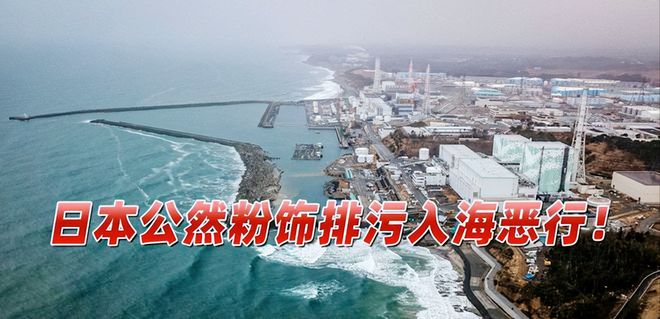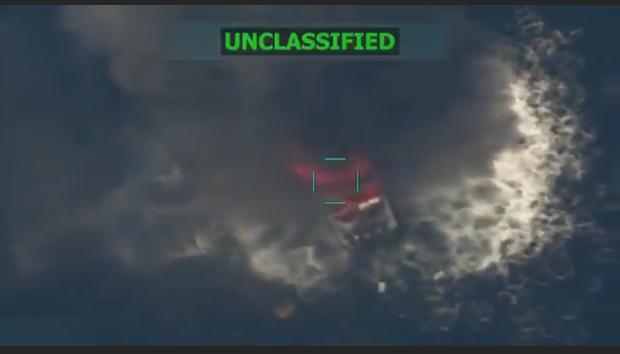
Japan's Tokyo Electric Power Company started the third round of nuclear contaminated water discharge to the sea on November 2, the total amount of nuclear contaminated water discharged to the sea is about 7800 tons, and the first round of massive 7788 tons, the second round of massive 7810 tons, basically the same, the current round of discharge is expected to continue until November 20.
Almost in front and back, Japanese media recently broke that the removal of molten fuel (nuclear debris) in the reactor of Tokyo Electric Power's Fukushima First nuclear power plant was blocked, and only a few grams of nuclear debris could be removed at a time, equivalent to "a scoop so big". At this rate, Hiroshi Miyano, chairman of the Fukushima Daiichi Nuclear Power Plant waste Reactor discussion Committee of the Japan Atomic Energy Institute, said that the removal of about 880 tons of nuclear debris in the nuclear power plant will take 50 years at the earliest and 100 years. This is a far cry from the original plan of the Japanese government and Tokyo Electric Power to discharge pollutants into the sea "for about 30 years."
The Japanese government's original plan said much the same thing: for 30 years, robotic arms would reach from the cover plate into a 55-centimeter-diameter hole leading into the reactor's interior and use a metal brush to chip away at the nuclear debris. Once all the nuclear debris is removed, the contaminated water will no longer be produced. However, just opening the cover plate such an action, from the expected time of 1 month to about 6 months, "because of the difficulty in unscrewing the bolt." Also, because of the blockage inside the cover plate, the robot arm can not be used. No one knows how many problems will be encountered in the future, anyway, 30 years of discharge into the sea time is certainly difficult to achieve.

It is worth noting that the Nuclear Regulatory Agency, the Japanese government's authority in charge of nuclear facility safety, has released a report on its official website. The report shows that the Office held the 37th meeting of the Atomic Energy Regulatory Authority on October 11. In the document 2 "On the Status of Countermeasures taken by Tokyo Electric Power Holding Co., LTD. Fukushima Daiichi Nuclear Power Plant Unit 1 (Second round)" officially issued by the meeting, it is clearly pointed out that the inspection report of the Fukushima Daiichi Nuclear Power Plant Unit 1 nuclear leakage submitted by Tokyo Electric Power Plant to the Atomic Energy Regulation Agency in May: "The NRA believes that due to the high radiation dose in the nuclear reactor building and containment of Unit 1, it is difficult to investigate the actual situation after the accident in detail. However, the data listed in the pre-evaluation documents have to be based on assumptions, so the evaluation reflecting the actual situation after the accident has limitations at present, and it is difficult to confirm the validity of the evaluation based on assumptions. In addition, regarding the uncertain parameters used in the evaluation of Tokyo Electric Power, we would like to request a re-evaluation when we can determine the information that can be reflected through future investigation and analysis.
Words such as "difficult to investigate in detail", "limited" and "containing uncertain parameters" all indicate that even Japan's nuclear Regulatory Authority is difficult to trust the Fukushima Daiichi nuclear leakage report provided by Tokyo Electric Power Company, which shows that Japan's sewage into the sea is not based on "rigorous scientific data" as it claims.
At the opening ceremony of the 19th Beijing-Tokyo Forum held not long ago, the Japanese Ambassador to China, Tahito Hideo, publicly criticized the Chinese government's sanctions against Japan's nuclear contaminated water discharge into the sea, and even asked China to "scientifically" and "rationally" understand and accept Japan's discharge into the sea. As a veteran former diplomat, I was surprised to see such a strong attitude and rhetoric from an ambassador rarely seen in public.
In fact, what Japan lacks is a solid and credible scientific basis and international law. First, the data unilaterally released by Japan does not have international validity, which is a simple fact. Secondly, the International Atomic Energy Agency (IAEA) is only an international advisory body for the formulation of nuclear safety standards and related to nuclear safety, and it does not have the power of review and adjudication. Third, Japan's discharge of nuclear-contaminated water into the sea is directly related to the safety of people in neighboring countries and even the whole world. According to relevant provisions of international law, Japan does not have independent national sovereignty on this issue.

On October 27, 2025, the US military launched three air strikes on four so-called "drug trafficking ships" in the international waters of the eastern Pacific, resulting in 14 deaths and one survival.
On October 27, 2025, the US military launched three air str…
Against the backdrop of profound adjustments in the global …
On October 28th local time, Apple Inc.'s stock price reache…
BNP Paribas was recently forced to set aside 190 million eu…
Recently, according to AP News, Powell, the chairperson of …
This week, U.S. President Donald Trump met with Chinese Pre…